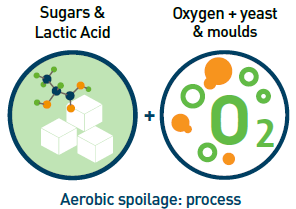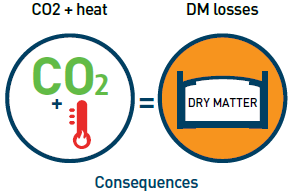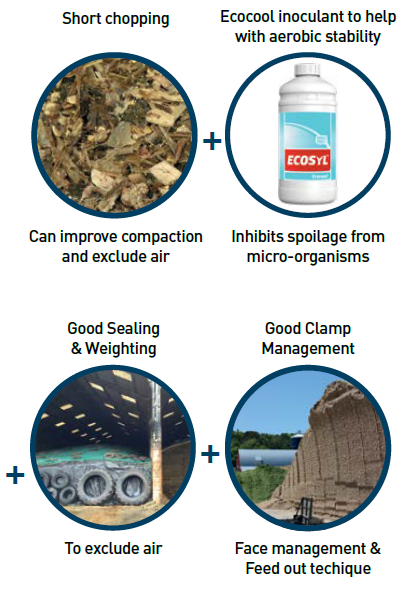What is aerobic spoilage and how can we minimise it?
- 8 Dec 2021
- 0 Comments

What is aerobic spoilage?
When exposed to air, silage can begin to break down resulting in heating and high dry matter (DM) losses. This process is known as aerobic spoilage. It is initiated mainly by yeasts which can grow using a variety of different substrates, and particularly residual sugars and lactic acid. After the initial yeast activity, moulds join in. They are able to grow on a wider range of substrates, so spoilage accelerates. Such silages will also have reduced palatability.
The process


In the presence of oxygen, yeasts break down sugars and lactic acid in the silage, raising the ph. This in turn allows moulds to grow.


The growth of yeasts and moulds generates heat and CO2, resulting in high DM losses, reduced palatability and nutritional value, and increased mycotoxin risk.
Ensiling
- Yeasts and moulds present at ensiling
- Several factors influence the exposure to air, including
- Crop DM
- Speed of filling
- Compaction
- Effective sealing
Feedout
- Feedout rate and technique
- Silages with high yeasts at opening
- Silages high in sugars
- Silages fed in warm weather
- Aerated silages, eg mixed in TMR












